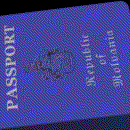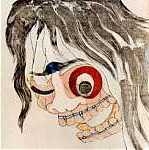| Hot Topics | |
|---|---|
Proposal To Double Autopsies
24 posts
• Page 1 of 1
Proposal To Double Autopsies
Yomiuri: Doubling of autopsies urged for unusual cases
The Japanese Society of Legal Medicine plans to propose doubling to 30,000 annually the number of autopsies conducted by medical examiners in the cases of people who are found dead in unusual circumstances. The figure represents a rise in autopsies conducted from the current 10 percent to 20 percent of deaths whose causes are unknown. In Japan, only a small number of people who die in an abnormal manner are autopsied by forensic doctors to identify the cause of death. The low rate of autopsies could leave some crime-related deaths unnoticed, according to experts...According to the draft proposal, more than 150,000 people are found dead in unusual circumstances every year, with the cause of death not necessarily obvious. The number of unusual deaths has increased sharply in recent years. However, about 90 percent of the 150,000 bodies are only superficially examined by police officers and general practitioners without expert knowledge to determine the cause of death, at the request of local police, the report said. Currently, there are only about 130 medical examiners across the country. They can physically perform a postmortem on only about 15,000 bodies a year. The number of medical examiners is estimated to decrease by 15 percent in the future...In addition, national and public universities have become reluctant to carry out autopsies due to questions of profitability after the universities became independent administrative institutions directly responsible for their own financial performances. The society is concerned that failure to conduct autopsies could cause some crimes and infectious diseases, such as a new type of influenza virus, to be missed...more...
The Japanese Society of Legal Medicine plans to propose doubling to 30,000 annually the number of autopsies conducted by medical examiners in the cases of people who are found dead in unusual circumstances. The figure represents a rise in autopsies conducted from the current 10 percent to 20 percent of deaths whose causes are unknown. In Japan, only a small number of people who die in an abnormal manner are autopsied by forensic doctors to identify the cause of death. The low rate of autopsies could leave some crime-related deaths unnoticed, according to experts...According to the draft proposal, more than 150,000 people are found dead in unusual circumstances every year, with the cause of death not necessarily obvious. The number of unusual deaths has increased sharply in recent years. However, about 90 percent of the 150,000 bodies are only superficially examined by police officers and general practitioners without expert knowledge to determine the cause of death, at the request of local police, the report said. Currently, there are only about 130 medical examiners across the country. They can physically perform a postmortem on only about 15,000 bodies a year. The number of medical examiners is estimated to decrease by 15 percent in the future...In addition, national and public universities have become reluctant to carry out autopsies due to questions of profitability after the universities became independent administrative institutions directly responsible for their own financial performances. The society is concerned that failure to conduct autopsies could cause some crimes and infectious diseases, such as a new type of influenza virus, to be missed...more...
-

Mulboyne - Posts: 18608
- Joined: Thu May 06, 2004 1:39 pm
- Location: London
Charles wrote:I like this idea. When I die, I want a double autopsy.
One on each of your heads?
"There are those that learn by reading. Then a few who learn by observation. The rest have to piss on an electric fence and find out for themselves!"- Will Rogers

-

Greji - Posts: 14357
- Joined: Fri Jun 25, 2004 3:00 pm
- Location: Yoshiwara
Yomiuri: Are people getting away with murder?
Could the nation's autopsy system be so wanting that people are getting away with murder? In 2009, about 160,000 people in Japan died suspicious, unnatural deaths. But autopsies were performed in only about 10 percent of these cases, according to the National Police Agency. With police having started probes into several mysterious deaths that took place in Tottori and Saitama prefectures, there have been growing calls to make drastic changes to the nation's autopsy system.
In August, the body of Yoshiyuki Oide, 41, was found in a car in a parking lot in Fujimi, southern Saitama Prefecture. Police discovered that Oide, a Tokyo company employee, died of carbon monoxide poisoning from several charcoal briquettes burned in a charcoal stove found in the vehicle. The Saitama prefectural police served a fresh arrest warrant Monday over Oide's death on Kanae Kijima, 35, who had been arrested six times before on suspicion of defrauding men whom she had told she would marry. Investigations are under way into whether Kijima, who was first arrested in September, is linked with the deaths of three other men between August 2007 and March 2009.
At the time of Oide's death on Aug. 6, police officers sent to the scene noticed several suspicious clues, including the fact that Oide's hands had no traces of charcoal on them. Thinking back to that time, however, a senior police officer said, "Had no medical examiner been sent to the scene, Oide's death might have been ruled a suicide." CO poisoning using a briquette stove in a sealed-up car is a common form of suicide.
Autopsies are supposed to be made in deaths suspected to be of unnatural cause. As of April, only 196 medical examiners were working on criminal investigations in the country. Medical examiners are appointed from among deputy inspectors who have more than 10 years of criminal investigation experience and after studying forensic medicine at the National Police Academy in Fuchu, western Tokyo. Last year, 32,676 bodies were examined by police medical examiners at the scene of death, accounting for 20.3 percent of all bodies found excluding road accidents.
This means that nearly 80 percent of bodies, or about 128,000, are examined by police to determine plausible foul play, without medical examiners present. Given this, many police investigators have asked for an increase in the number of medical examiners. As one Saitama investigator put it, "There could have been cases that were deemed suicides and investigations wrapped up just because briquettes were found nearby."
Some investigators have pointed to "investigative limitations" over the access medical examiners are allowed. A medical examiner typically examines a body together with a police-commissioned medical doctor. Most examinations are limited to external probes of the body such as visual inspection and touch. This makes it hard to determine if any poisons or drugs have been used, the police officers said. The spate of unnatural deaths in the Tokyo metropolitan area and Tottori Prefecture have raised suspicions that a number of murders might have been dismissed either as suicides, deaths due to sickness or accidents.
Takao Terada, 53, a company employee in Ome, western Tokyo, was found dead in February 2009. Terada died of CO poisoning in his apartment, where there were several briquette stoves and boxes of charcoal briquettes, leading the police to believe he committed suicide, possibly due to a romantic breakup, and decide not to order an autopsy. A senior police investigator said it might have been possible for the police to investigate his death as foul play "if the incident had taken place in Tokyo's 23 wards, which have an established forensic pathology system." That system, under which doctors authorized to perform autopsies carry out postmortem examinations, is in effect only in the 23 wards of the capital, Yokohama, Nagoya, Osaka and Kobe. The police later learned that Kijima, the woman arrested Monday over Oide's death, had been on intimate terms with Terada, leading investigators to suspect that Kijima could be involved in Terada's death.
In Tottori Prefecture, which does not have a forensic pathologist system in place, the deaths of three men since 2004, aged 42, 27 and 41, were initially deemed by police either as suicides or accidental deaths not subject to autopsies. But it was later revealed that all three had been acquaintances of Miyuki Ueda, 36, a former bar hostess who was arrested on Jan. 28 on murder-robbery charges and who allegedly killed Hideki Maruyama, 57, in October after giving him sleeping pills.
A senior investigator of the Tottori prefectural police said it would be extremely difficult to reinvestigate the causes of death for the three men even though Ueda could be responsible for their deaths. According to the NPA, only 37.4 percent of unnatural deaths that police suspected of possible foul play were examined in 2009. Kijima has consistently denied any link to Oide's death, investigative sources said, and the police have no solid evidence substantiating the woman's role in the alleged murder.
But the investigators say they are determined to prove that only Kijima could have killed Oide. But, Takeshi Tsuchimoto, a former prosecutor of the Supreme Public Prosecutors Office pointed out that the police will probably find it very hard to prove their case with only circumstantial evidence "since the use of charcoal briquettes and sleeping pills in the suspected killings is not unusual and would be insufficient to carry the case in court."
-

Mulboyne - Posts: 18608
- Joined: Thu May 06, 2004 1:39 pm
- Location: London
Is the job title "paramedic" a misnomer?
Surprise comeback: 'Dead' man wakes up in autopsy room
http://mdn.mainichi.jp/mdnnews/news/20100211p2a00m0na002000c.html
It turns out there's a big difference between mostly dead and all dead, or so police may have thought when a "dead" man opened his eyes in an autopsy room here Wednesday.
According to the Saitama Fire Department, a local resident found the 51-year-old man unconscious in a local park and summoned paramedics, saying he was cold to the touch.
When emergency workers arrived, they pronounced the man dead because his limbs and face were stiff, failing even to ascertain if he was breathing and skipping other basic checks. The paramedics then took him not to hospital but to the local police station to determine the cause of death.
Once in the autopsy room, however, he opened his eyes, and police realized he was in fact alive. He was sent to hospital where he was diagnosed with bleeding in the right hemisphere of his brain. Doctors say he needs about three weeks of rest, but that his life is not in danger.
http://mdn.mainichi.jp/mdnnews/news/20100211p2a00m0na002000c.html
•I prefer liberty with danger to peace with slavery.•
-

Mike Oxlong - Posts: 6818
- Joined: Wed Oct 20, 2004 5:47 pm
- Location: 古き良き日本
Once in the autopsy room, however, he opened his eyes, and police realized he was in fact alive.
Sugoi!!
-Always thinking on their feet and amazing powers of perception!
(And you guys always saying that J-cops have no common sense...)
[font="Trebuchet MS"][SIZE="1"]Believe nothing, no matter where you read it or who has said it, not even if I have said it, unless it agrees with your own reason and your own common sense.
- Gautama the Buddha[/SIZE][/font]
- Gautama the Buddha[/SIZE][/font]
-

Dragonette - Maezumo
- Posts: 280
- Joined: Wed Dec 19, 2007 12:51 am
- Location: New York City
Dragonette wrote:Sugoi!!
-Always thinking on their feet and amazing powers of perception!
(And you guys always saying that J-cops have no common sense...)
That's true. But, the problem was that they held him for 23 days trying to make him confess that he was really dead.....
"There are those that learn by reading. Then a few who learn by observation. The rest have to piss on an electric fence and find out for themselves!"- Will Rogers

-

Greji - Posts: 14357
- Joined: Fri Jun 25, 2004 3:00 pm
- Location: Yoshiwara
This is a real worry for people falling asleep on the last train - you might wake up to find yourself the subject of an autospy..
also a concern for folks like Greji after one of his famous cigar nights and he takes a nap in the corner of the bar...
(Ya know I am just kidding Greji - no-one would ever mistake you for a corpse - despite the constant stiffy. )
also a concern for folks like Greji after one of his famous cigar nights and he takes a nap in the corner of the bar...
(Ya know I am just kidding Greji - no-one would ever mistake you for a corpse - despite the constant stiffy. )
GomiGirl
The Keitai Goddess!!!
The Keitai Goddess!!!
-

GomiGirl - Posts: 9129
- Joined: Fri Jul 05, 2002 3:56 pm
- Location: Roamin' with my fave 12"!!
GomiGirl wrote: despite the constant stiffy. )
Hey Grej, are those magic pills still working for you?
9/11 Terror Attack: Survived. 3/11 Earthquake: Survived.
-

IkemenTommy - Posts: 5425
- Joined: Sun Jul 24, 2005 3:29 am
IkemenTommy wrote:Hey Grej, are those magic pills still working for you?
You know which ones to ask for a status report?
"There are those that learn by reading. Then a few who learn by observation. The rest have to piss on an electric fence and find out for themselves!"- Will Rogers

-

Greji - Posts: 14357
- Joined: Fri Jun 25, 2004 3:00 pm
- Location: Yoshiwara
GomiGirl wrote:This is a real worry for people falling asleep on the last train - you might wake up to find yourself the subject of an autospy..
No those people are already Zombies, and I think there is some against giving Zombies autopies.
-

dimwit - Maezumo
- Posts: 3827
- Images: 3
- Joined: Tue Jun 01, 2004 11:29 pm
Autopsy? What's that?
[SIZE="4"]Only 10% of suspicious deaths undergo autopsies[/SIZE]
Only 10 percent of suspicious deaths in Japan underwent forensic autopsies in 2009, mainly because the government has failed to convince people of their importance, according to experts.
Japan's autopsy rate is the lowest among advanced nations, compared with 100 percent in Finland and Sweden and 50 to 60 percent in Britain, the United States and Australia.
Chiba University Prof. Hirotaro Iwase, director of the Japanese Society of Legal Medicine, said people in other developed countries are aware of the public service role that forensic autopsies play in protecting bereaved families' rights.
He also emphasized how determining the cause of death can lead to advances in medical research and treatment.
"It doesn't mean people in these countries like autopsies," said Iwase. "It depends on whether the government explains their importance for the sake of the deceased and their bereaved families and therefore gains public trust."
-

Ganma - Maezumo
- Posts: 741
- Joined: Wed Sep 09, 2009 6:48 pm
Update
A little progress at last.
[SIZE="4"]Bills allow autopsies by cops, kin OK or no[/SIZE]
[SIZE="4"]Bills allow autopsies by cops, kin OK or no[/SIZE]
Goal to increase postmortems in deaths deemed as suspicious
Kyodo
The ruling and opposition parties plan to submit two bills to the Diet that will enable police to conduct autopsies without having to obtain the consent of relatives when it is uncertain whether a person died naturally or was the victim of foul play, lawmakers said Thursday.
If enacted, they will be the first laws to articulate the system of identifying the cause of death. Concern about the nation's low autopsy rate has been growing over the years as the lack of police-conducted postmortems has failed to identify crimes that have been committed. In 2011, autopsies were performed on only 11 percent of bodies handled by police.
-

Ganma - Maezumo
- Posts: 741
- Joined: Wed Sep 09, 2009 6:48 pm
Re: Proposal To Double Autopsies
Japan’s suicide statistics don’t tell the real story
continues at Japan Times
According to the National Police Agency (NPA), Japan’s annual total of suicides dipped below 30,000 people for the first time in 15 years in 2012 — to 27,766. While the fall is great news, part of me wonders: Has there really been a drop in suicides or should we look at it as a drop in homicides?
According to the government’s 2012 “White Paper on Suicide,” in 2011 there were 30,651 cases recorded of people taking their own lives. The motives listed were in the following descending order of problems related to health; daily life; family; and work.
But here’s an odd thing: The reasons for the suicide were only determined in 73 percent of cases — in more than 25 percent of cases they were for reasons unknown. Many of those cases perhaps presented no reason because they weren’t suicides at all.
According to the NPA, since 1998 there have been 45 cases of murder initially ruled by police to have been due to natural causes or suicide. Among those, one was a man from Nagano Prefecture whose murder in 1980 was treated as a suicide until the killer confessed in 2000 — after the statue of limitations had passed.
The NPA has admitted that in Japan only 10 percent of suspicious deaths result in an autopsy. However, when a death initially appears to be due to suicide, only 5 percent are autopsied. The lack of a comprehensive use of autopsies was only brought to the public’s attention after several cases of “missed murders” came to light. The 45 known cases may just be “the edge of the graveyard” as some cops have put it...
continues at Japan Times
•I prefer liberty with danger to peace with slavery.•
-

Mike Oxlong - Posts: 6818
- Joined: Wed Oct 20, 2004 5:47 pm
- Location: 古き良き日本
Re: Proposal To Double Autopsies
Lies, big lies and statistics... movie at 11'
-

Coligny - Posts: 21822
- Images: 10
- Joined: Sat Jan 17, 2009 8:12 pm
- Location: Mostly big mouth and bad ideas...
Re: Proposal To Double Autopsies
So as it stand now, any gaijin who marries a local can be poisoned or otherwise not-obviously killed by the spouse, who can then deny permission for an autopsy because there's no other family around?
And all these 90% of "yup, he's dead, and suspiciously so, but he don need no autopsy" is being done by cops and emergency workers??? who can't even tell if a guy is still alive?
And all these 90% of "yup, he's dead, and suspiciously so, but he don need no autopsy" is being done by cops and emergency workers??? who can't even tell if a guy is still alive?
- iiyama
- Maezumo
- Posts: 28
- Joined: Fri Jan 11, 2013 11:51 am
- Location: Secret bunker under Kasumigaseki
Re: Proposal To Double Autopsies
Pretty much... if you refuse the autopsy their are supposed to send a police team to inspect the place where the death occured. Sometimes after... unless the doc say it's not needed...
Pets count even less... took me ages to explain to the japanese vet she needed to fill the death certificate to transmit to the french vet (who by luck is registered under sermon by police authorities) and have it filed by the official feline registry. (sort of State Departement of Cats under the control of the ministry of agriculture)
Pets count even less... took me ages to explain to the japanese vet she needed to fill the death certificate to transmit to the french vet (who by luck is registered under sermon by police authorities) and have it filed by the official feline registry. (sort of State Departement of Cats under the control of the ministry of agriculture)
-

Coligny - Posts: 21822
- Images: 10
- Joined: Sat Jan 17, 2009 8:12 pm
- Location: Mostly big mouth and bad ideas...
Re: Proposal To Double Autopsies
iiyama wrote:So as it stand now, any gaijin who marries a local can be poisoned or otherwise not-obviously killed by the spouse, who can then deny permission for an autopsy because there's no other family around?
And all these 90% of "yup, he's dead, and suspiciously so, but he don need no autopsy" is being done by cops and emergency workers??? who can't even tell if a guy is still alive?
Great, isn't it? Slip something in his food, push him off the balcony, countless was to
-

matsuki - Posts: 16047
- Joined: Wed Feb 02, 2011 4:29 pm
- Location: All Aisu deserves a good bukkake
Re: Proposal To Double Autopsies
iiyama wrote:So as it stand now, any gaijin who marries a local can be poisoned or otherwise not-obviously killed by the spouse, who can then deny permission for an autopsy because there's no other family around?
Probably doubly so if said FG married into a family of doctors... oh, wait.
-

cstaylor - Posts: 6383
- Joined: Mon Apr 29, 2002 2:07 am
- Location: Yokohama, Japan
Re: Proposal To Double Autopsies
cstaylor wrote:iiyama wrote:So as it stand now, any gaijin who marries a local can be poisoned or otherwise not-obviously killed by the spouse, who can then deny permission for an autopsy because there's no other family around?
Probably doubly so if said FG married into a family of doctors... oh, wait.
As long as said FG does the janitorial work in said family's living quarters, they will probably keep him alive...
-

Russell - Maezumo
- Posts: 8580
- Images: 1
- Joined: Fri Aug 13, 2010 11:51 pm
Re: Proposal To Double Autopsies
Please, don't feed the tard...
-

Coligny - Posts: 21822
- Images: 10
- Joined: Sat Jan 17, 2009 8:12 pm
- Location: Mostly big mouth and bad ideas...
Re: Proposal To Double Autopsies
Russell wrote:cstaylor wrote:iiyama wrote:So as it stand now, any gaijin who marries a local can be poisoned or otherwise not-obviously killed by the spouse, who can then deny permission for an autopsy because there's no other family around?
Probably doubly so if said FG married into a family of doctors... oh, wait.
As long as said FG does the janitorial work in said family's living quarters, they will probably keep him alive...
At least until the next renewal term for the life insurance policy.... all those McNuggets are sure to show up on the 健康診断.
-

cstaylor - Posts: 6383
- Joined: Mon Apr 29, 2002 2:07 am
- Location: Yokohama, Japan
Re: Proposal To Double Autopsies
Two Weeks After Waking Up In Body Bag, Man Dies
Somewhere related to this same case I read that in many counties in the US, coroner was an elected position, where an M.D. was not required...
Somewhere related to this same case I read that in many counties in the US, coroner was an elected position, where an M.D. was not required...
•I prefer liberty with danger to peace with slavery.•
-

Mike Oxlong - Posts: 6818
- Joined: Wed Oct 20, 2004 5:47 pm
- Location: 古き良き日本
24 posts
• Page 1 of 1
Who is online
Users browsing this forum: No registered users and 9 guests

